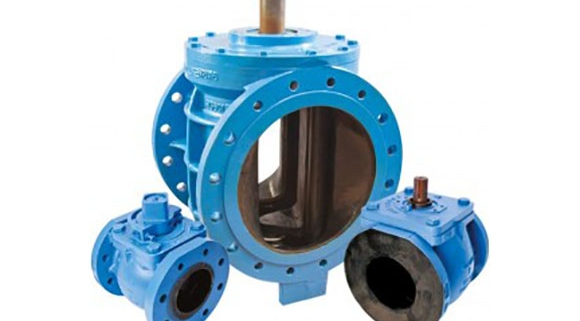Plug Valves Advantages and Disadvantages
Plug Valves Advantages and Disadvantages
A Plug Valve is a quarter-turn rotational motion Valve that use a tapered or cylindrical plug to stop or start the flow. In the open position, the plug-passage is in one line with the inlet and outlet ports of the Valve body. If the plug 90° is rotated from the open position, the solid part of the plug blocks the port and stops the flow. Plug valves are similar to Ball valves in operation.
Type of Plug Valve
- lubricated plug valve
- non-lubricated plug valve
- eccentric plug valve
- lift-type plug valve
Plug Valve Application
Plug valves are a type of flow control valve that allows the user to increase or decrease flow by rotating the handle or other similar operation. The user may have to adjust the valve to the desired flow rate, with the valve able to hold the flow rate consistently and reliably.
Other popular flow control valves include needle and fine metering valves, but they generally have more moving parts than plug valves, which makes them more expensive and harder to maintain.
Plug valves are typically used in applications where flow must be controlled and changed on a regular basis and where the user must have access to the valve.
Plug valves should not be used in applications where a constant, steady flow is required or where the valve does not need to be readily accessible.
Quarter-turn plug valves are the most common and involve a simple quarter turn on a handle to open and close the valve. They are economically priced and are commonly used for applications involving low-pressure throttle.
Advantages of Plug Valve
- one-piece valve body, top-loading design, simple structure, convenient maintenance, no leakage, supporting higher-strength pipe system.
- The medium in the chemical process has strong corrosion resistance. In the chemical field, corroded valve body often can be seen. Therefore, the valve in the application of chemical process must have strong permeability and resistance to intergranular corrosion. The body of plug valve should be high-level casting, with casting quality of class II and precision of grade V.
- Really simple internals. The plug is completely covered by the bushing. Body and plug have no wear. Replacing simple and economic bushing or top sealing device can complete the maintenance and update of the valve. Plug valve can reach long-term use requirement of 300 ℃, which has a considerable competitive edge compared with a ball valve that belongs to this application.
- Top surface and flange are all the processing surface of the plug valve. Other parts are all one-time casting molding. The inside of the valve body has no processing. Comparing with the ball valve, it has the advantages of lower machining allowance. Especially, when the material is INCONEL, MONEL, HARTZ alloy, plug valve has the distinct advantage of price.
- According to the user’s demand, various designs of plug valve can achieve a specific function. Plug valve is the best one of customized products. Plug valve is easy to cater to custom design, can be made into three-way, four-way, five-way and six-way valve; double valve group or valves group; all kinds of jacket requirements, etc.. For example, the six-way distribution valve used in the polyester industry is designed according to the requirements of patent owners, while the ball valve is difficult to make in line with custom design.
- Now, no clearance and face sealing is still the unique features of the plug valve. Although it has the design of the clearance like ball valve’s, the clearance just can be reduced to 1 ~ 3 mm at the most, which can’t achieve the application advantages of coated surface sealing. This characteristic of plug valves enables it to deal with a lot of harsh media, such as easy crystal and viscous fluid or those medium containing catalyst particles and deposit.
- Coated bushing provides the characteristics of face sealing. It can be strictly controlled in accordance with the test requirements of zero leakage of API 598 soft sealing valve seat, achieving or sealing requirements of a stem of TA Luft or ISO 15848.
- Comprehensive characteristics of plug valve are long service life, high reliability. It is a good choice for a lot of corrosive, abrasive and toxic fluid as well as continuously operated device. It has the application advantages and extensive applicability in the field of chemical industry.
Disadvantages of Plug Valves
- The design of face sealing improves the requirements for driving torque. In the case of needing to be equipped with pneumatic actuators, compared with ball valve, it will cost much more. Such as the PP process, the main shut-off valve of it is the plug valve, rather than the ball valve, but the high-frequency switching valve is a ball valve. Therefore, basically, the pneumatic plug valves are applied to the key cut-off position. Plug valve is not recommended to apply it to the occasion of adjustment since the high-frequency switching is not the advantage of it. It is the cut-off valve of high reliability.
- In some applications, the incorrect choice of bushing material or improper design of the release area of bushing deformation may cause swelling for PTFE bushing materials, leading to the change of driving torque for several times.
- Though the investment of plug valve is more than ball valve, as its advantages of reliability and the total cost of the life cycle are gradually accepted by users, more and more users will continue to use the plug valve.




Leave a Reply
Want to join the discussion?Feel free to contribute!